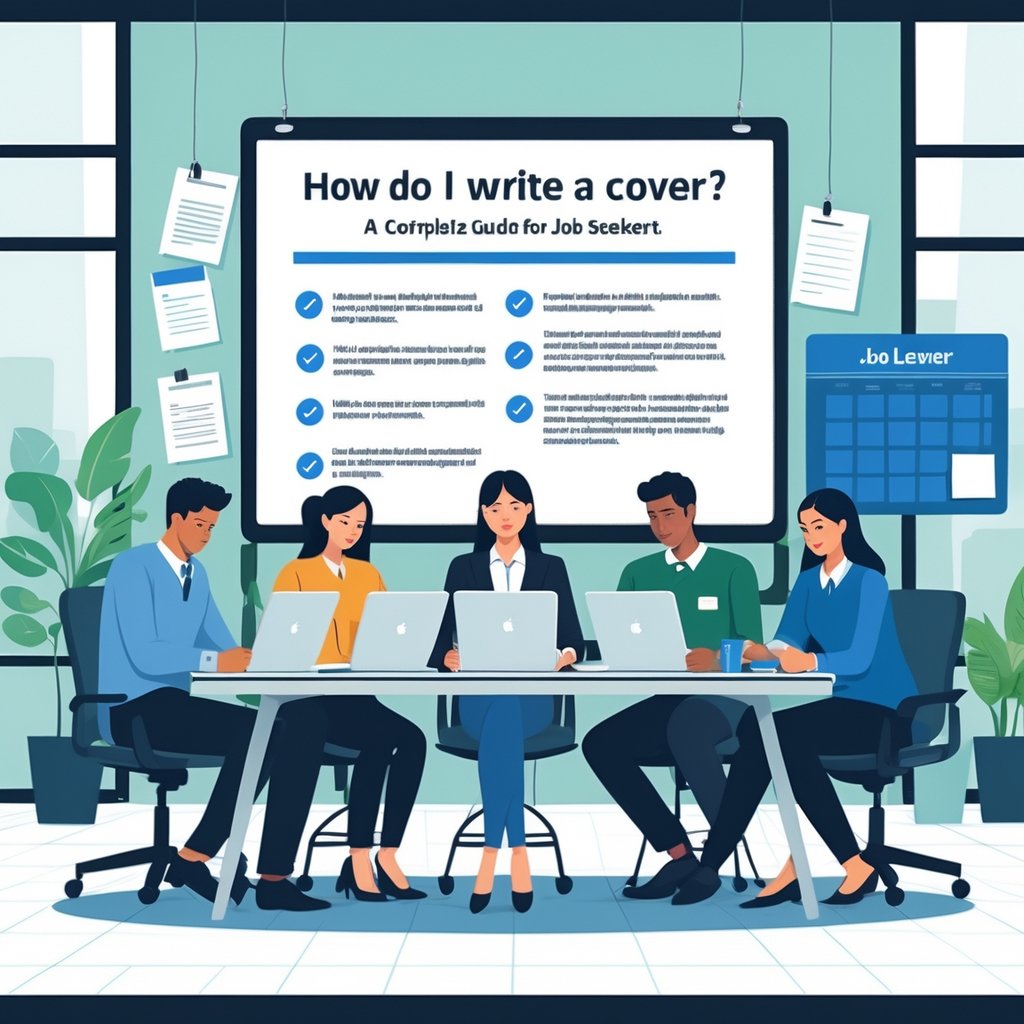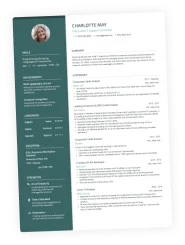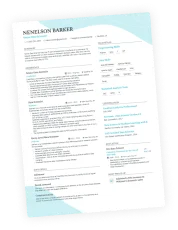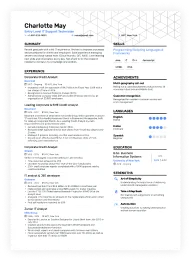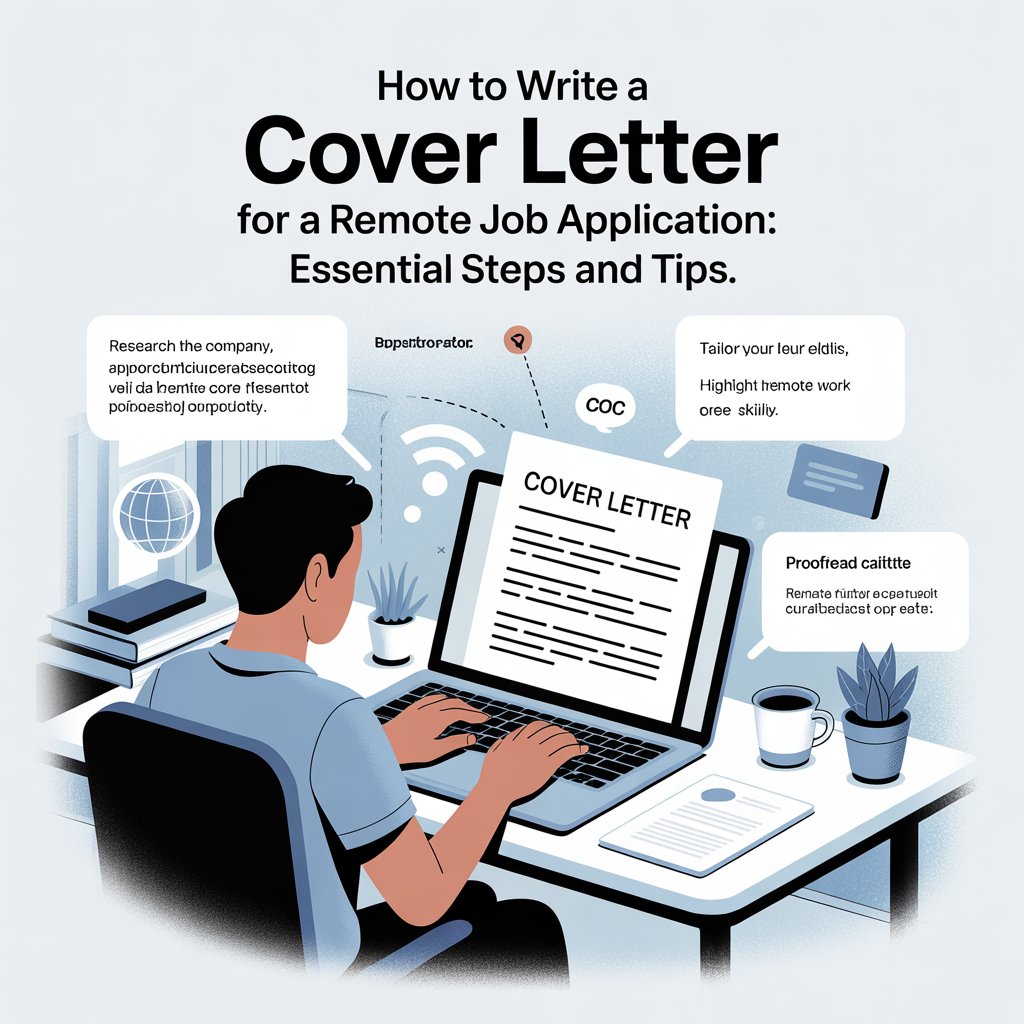Many job seekers wonder how to write a cover letter that actually gets noticed.
A strong cover letter is a short, focused introduction that highlights your value to the employer and connects your experience to the job application.
This simple step can help set you apart from others, as it shows effort beyond just sending a resume.

When writing a cover letter, candidates should clearly state why they want the job and how their experience fits the company’s needs.
Employers are looking for more than just a list of skills—they want to see enthusiasm and a good reason to consider you for the position.
Using a friendly yet professional tone can help make a good impression and leave the hiring manager wanting to know more.
A well-written cover letter should be easy to read, direct, and tailored for each job.
Following straightforward tips, like those in the Indeed guide on cover letters, can help anyone craft a message that stands out.
Understanding the Purpose of a Cover Letter
A cover letter introduces the job seeker to the employer.
It explains why the applicant is qualified for the job and gives details that are not found in a resume.
Highlighting Skills and Experiences
A cover letter lets applicants give real examples of their skills and experiences that connect to the job.
Unlike the resume, the letter allows more explanation.
The job seeker can tell how their work in the past matches the tasks they will have in the new role.
Employers look for evidence that the skills listed in the resume are real.
Using the cover letter, applicants can talk about specific projects, awards, or training.
For example, someone who managed a team can explain how this experience made them a good leader.
Key skills—like teamwork, responsibility, or communication—should match those in the job posting.
Alex Okoro
alex.okoro@email.com
(555) 222-6677
New York, NY
May 12, 2025
Hiring Manager
VisionTech Inc.
85 Madison Ave
New York, NY
Dear Hiring Manager,
I am writing to express my strong interest in the Project Coordinator position at VisionTech Inc. With over three years of experience supporting fast-moving teams, coordinating project schedules, and driving operational efficiency, I believe I am well-equipped to contribute to the continued success of your organization.
In my current role at CoreWorks, I oversee the daily coordination of five active client projects ranging from product development to software implementation. My responsibilities include managing project timelines, facilitating communication between stakeholders, and ensuring that deliverables are met on time and within scope. Through a workflow improvement initiative I helped launch, our team reduced delivery delays by 30% in the past six months.
I am proficient in project management tools such as Asana, Trello, and Microsoft Project, and I am comfortable analyzing project data to identify risks and improve resource allocation. My colleagues often commend my ability to remain organized and calm under pressure, even when managing competing priorities across departments.
What excites me about VisionTech is your reputation for blending innovation with social impact. I recently read about your expansion into sustainable tech solutions, and I’m eager to be part of a team that combines purpose with progress. I am confident that my skills in coordination, communication, and planning align well with the values and expectations of your team.
Thank you for taking the time to review my application. I have attached my resume for your consideration and would appreciate the opportunity to speak further about how my background and enthusiasm can support your ongoing projects.
Sincerely,
Alex Okoro
Adding keywords directly from the ad shows the employer the applicant read the listing and understands what is needed.
Making a Strong First Impression
The cover letter is the first writing sample an employer sees, so it must be well written and clear.
A strong opening shows confidence and grabs attention.
For example, starting with a line about achieving specific goals or solving a problem can create interest.
First impressions matter because employers often review many applications.
A cover letter that is direct, polite, and free of errors stands out.
Simple language and correct formatting make it easier to read.
Making a good impression means showing personality while staying professional.
Short and direct letters work best, especially when they are focused on what the employer needs.
Complementing the Resume
A resume lists facts about work history, education, and skills.
The cover letter’s job is to fill in the story behind those facts.
It connects the job seeker’s background to the company’s needs.
Cover letters should explain why the applicant wants this specific job or to work for this company.
Details such as personal interest, passions, and career goals help the reader see a good fit.
By linking skills and experiences to the job description, the letter shows why the applicant adds value to the team.
A well-written cover letter introduces the candidate and helps set them apart from others with similar resumes.
Preparation Before Writing
Strong cover letters are tailored to a specific employer and job opening.
Before writing, job seekers should gather all important information about the employer, understand the job’s unique needs, and organize details about their qualifications and experience.
Researching the Employer and Job Description
Learning about the employer helps applicants target their cover letter.
They should visit the company’s website, read its mission statement, and look at recent news or projects.
This research gives insight into what the employer values most.
Job descriptions are key.
Applicants should break down the job advertisement and note the exact skills, tasks, and qualifications listed.
Making a table or list that matches the job’s needed skills with their own background can be helpful.
By focusing on what the employer highlights, applicants can show that they have paid attention and are a good fit.
If possible, learning the hiring manager’s name and role makes the letter more personal.
First-hand knowledge like this shows respect and effort, which stands out to organizations.
For more practical steps, analyzing the job description can boost the quality of the letter.
Identifying Key Qualifications and Requirements
Carefully reviewing the job description helps applicants identify the most important requirements.
These may include degrees, certifications, or years of experience with certain tools or tasks.
It helps to highlight specific qualifications mentioned, such as “Bachelor’s degree required,” “experience managing teams,” or “proficiency in Excel.”
Some people make a checklist of must-have and preferred qualifications to see where they match or exceed the requirements.
Addressing these points directly in the cover letter shows that the candidate read the posting and can meet the company’s needs.
Mentioning preferred skills that may not be required, but are valued, can also give an applicant an edge.
Collecting Education and Work Experience Details
Before writing, applicants should collect accurate information about their education and past work.
This includes the names of schools or programs, degrees earned, and graduation dates.
For work experience, it helps to list past employers, job titles, and main responsibilities.
Short bullet points work well.
Applicants should focus on experiences that relate to the position they want, including any achievements or awards.
Having these details ready makes it easier to customize each cover letter.
Organizing facts ahead of time allows the writer to quickly reference dates and responsibilities while creating a focused, direct letter.
Cover letter writing guides often recommend completing this step first.
Cover Letter Structure and Formatting
A cover letter should be easy to read and neatly organized.
Attention to layout, precise contact details, and a logical outline helps employers quickly find the most important information.
Details matter, from line spacing to picking the right greeting.
Contact Information and Salutation
At the top of the cover letter, the writer should include their own contact information.
This usually appears in the header and contains:
- Full name
- Address
- Phone number
- Email address
- Date
Below this, add the employer’s name, company, and physical address.
Starting with these details makes the letter look professional and helps it reach the right person.
The salutation is next and should greet a specific person when possible.
Using “Dear [Name],” shows effort and respect.
If the name is unknown, “Dear Hiring Manager,” is a safe and accepted choice.
Never use outdated greetings like “To Whom It May Concern.”
Formatting Essentials
Format matters in making a cover letter look clean and professional.
The document should be single-spaced with one-inch margins on all sides.
A simple, readable font such as Arial or Times New Roman, size 11 or 12, should be used.
Leave a space between each section for clarity.
Align everything to the left and avoid using colored fonts or images.
The letter should not be longer than one page.
Consistent layout choices help the employer focus on the message instead of the design.
For a visual example, see this step-by-step cover letter formatting guide.
Proofreading for errors and keeping all details aligned can improve first impressions.
Clean formatting makes it easy for employers to read and respond.
Outline of the Main Sections
A strong cover letter follows a clear structure with three main parts:
-
Introduction: State the job position, how you learned of it, and a brief reason for applying.
-
Body: Give 1–2 short paragraphs showing your relevant experience and skills. Use specific examples that match the job description.
-
Closing: Summarize your interest. Thank the employer for their time and share how you will follow up.
Most cover letters fit on one page and stick to three paragraphs as shown in this cover letter structure outline.
Sticking to this order keeps the message direct and easy for the employer to follow.
Writing an Effective Introduction
A strong cover letter introduction gets attention and starts things off on the right foot.
Key steps include addressing the hiring manager directly if possible and showing real interest in the job.
Addressing a Specific Person or Hiring Manager
Whenever possible, a cover letter should be addressed to a specific person rather than using a generic greeting.
Using “Dear [Hiring Manager’s Name]” shows that the applicant took time to research the job and the company.
This detail can help a candidate stand out from others who open with “To Whom It May Concern”.
If the name is not in the job ad, it is smart to look on the company’s website, LinkedIn, or call the office.
Directing the greeting to a hiring manager’s name signals effort and respect.
It also creates a friendly, professional tone from the very first sentence.
A well-addressed greeting sets the tone for the rest of the letter and instantly makes it more personal and engaging.
This tip is echoed by job experts and guides, such as those on the Purdue OWL.
Expressing Enthusiasm for the Role
Showing enthusiasm early in the cover letter helps build a positive impression.
Applicants should state why they are excited about this role and company.
This can be done in the very first sentence or two.
For example:
- “I am excited to apply for the Marketing Assistant position at Riverstone Agency because I admire your team’s creative work.”
Enthusiasm should be genuine and matched to the job.
It is helpful to mention a specific detail about the company or its work that sparked the applicant’s interest.
Experts highlight that sharing real excitement, not desperation, makes the introduction memorable.
This advice is featured in tips on writing a standout cover letter introduction.
A clear, enthusiastic introduction encourages the hiring manager to keep reading, making it more likely the cover letter will stand out from others.
Crafting Impactful Body Paragraphs
Effective body paragraphs in a cover letter clearly link real work experiences and skills to the job description. Highlighting achievements, showing skills in action, and tying personal character to company culture helps a candidate stand out.
Showcasing Relevant Experience
The main body paragraph should start with a direct statement of relevant experience. This can include past job titles, internships, or volunteer opportunities.
Begin with a topic sentence that matches the role’s key requirements. For example, “During her internship at Tech Solutions, she managed daily customer emails and improved response time by 20%.”
Provide 2-3 specific examples, using numbers or names where possible. A table can be helpful:
| Experience | Related Skill | Result |
|---|---|---|
| Interned at Tech Solutions | Communication | Faster customer replies |
| Retail Team Lead | Leadership | Reduced staff turnover |
Mentioning locations or teams strengthens credibility. For more guidance, see Purdue OWL’s tips on describing experience.
Demonstrating Skills and Achievements
Focus next on key skills the employer is seeking. Choose 1-2 skills listed in the job posting, and give short stories of using those skills successfully.
Bulleted lists make examples easier to follow:
- Led a group project that finished ahead of schedule.
- Trained three new hires, each of whom met performance goals.
Achievements should be clear and measurable. If possible, show how a skill led to a positive result.
For advice on connecting skills to job needs, read how Indeed explains matching experience to roles.
Aligning Personality with Organization’s Values
Employers look for people whose personality fits their organization’s values. Use 1-2 sentences to describe traits—like teamwork, adaptability, or passion—that match the company culture.
Quote a company value if known, such as, “She values teamwork, which matches the company’s focus on collaboration.” Share examples where personality impacted the workplace, such as taking initiative during a team project or supporting a new coworker.
For more on matching personality and workplace culture, Columbia’s advice encourages showcasing personal fit. Use bold or italic text to draw attention to important personality traits or company values, so these details stand out to the reader.
Tailoring Your Cover Letter to the Job
A well-tailored cover letter helps a candidate show they understand the job and meet the company’s needs. Matching the letter closely to the position can set an applicant apart from others.
Customizing for Job Requirements
Every job listing includes unique requirements. Applicants should read the job description closely and look for key skills, experiences, and qualities that the potential employer seeks.
To tailor a cover letter, mention the exact job title and the name of the company. Use language from the job posting to reflect skills or certifications listed by the employer.
For example, if a company wants a candidate with “strong communication skills,” include a sentence highlighting communication experience. Create a simple list or table before writing to organize the job requirements and match each one to personal strengths or past roles.
This helps ensure important details are not missed and the letter remains focused. Using this method shows attention to detail.
It also tells the employer that the applicant read the job ad carefully and is serious about the position. For more tips, see how to customize a cover letter for each job application.
Highlighting Unique Qualifications
Employers often receive many applications from candidates who have similar qualifications. A tailored cover letter should highlight what makes the applicant different.
Applicants can include a short example or story to show how they solved a problem or added value in a previous role. Mention any special training or certifications that are not required but could benefit the company.
It is helpful to bullet special skills or areas of expertise, such as:
- Experience leading a team on a tight deadline
- Knowledge of industry-specific software
- Bilingual skills
By identifying and showcasing these unique qualifications, the letter becomes more memorable to the hiring manager. For more strategies on presenting unique strengths, review effective cover letter advice.
Closing and Call to Action
A cover letter’s ending can influence how potential employers view the applicant’s interest and professionalism. Including a strong closing paragraph, a clear call to action, and a polite expression of interest in an interview can set a positive tone.
Writing a Strong Closing Paragraph
A strong closing paragraph leaves a lasting impression. It should briefly restate why the applicant is a good fit for the job and express enthusiasm for the role.
Being concise is important. Rambling or adding unrelated details can weaken the message.
Focus on one or two main points, such as a unique strength or an achievement, and how these match the job.
Sample elements of a strong closing:
- State a key skill or experience relevant to the job.
- Express appreciation for the employer’s time.
- Restate interest in the position.
The closing should make it clear the person understands what the employer is looking for and is excited to join the team. For tips on covering these points, see how to end a cover letter with confidence.
Encouraging Employer Follow-Up
Ending with a call to action invites the employer to take the next step. This could involve asking for an interview, offering to provide more information, or stating the applicant will follow up within a specific timeframe.
Such approaches show initiative and make it easier for employers to respond.
Examples of calls to action:
- “I look forward to discussing my qualifications in more detail.”
- “Please contact me at your convenience if you have questions.”
- “I am available for an interview at your earliest convenience.”
When writing this section, it is important to remain polite and professional. Avoid appearing demanding or too casual.
For more examples, see tips for a good cover letter call to action.
Expressing Interest in an Interview
It is best to clearly state interest in an interview before closing the letter. This shows the employer the applicant is eager for the next step while keeping the tone respectful.
The request can be direct yet courteous. For example:
“I am excited about the opportunity to join your team and would welcome the chance to interview and discuss my fit for the position.”
Use a professional sign-off, such as “Sincerely” or “Best regards,” followed by the full name. Proofreading the final lines is important before sending.
For help with sign-off phrases, see these professional cover letter closings and tips.
Being clear and confident in this part of the letter helps show a positive attitude. It can leave potential employers with a strong last impression.
Enhancing Your Cover Letter
Small improvements can help a cover letter stand out. Focusing on proofreading, using modern tools like artificial intelligence, and building strong communication skills can make each application more effective and professional.
Proofreading for Clarity and Tone
Proofreading helps remove typos and unclear language from a cover letter. Reading the letter out loud can reveal awkward sentences or overly complex words.
It is helpful to look for repeated words or phrases and replace them with better choices. Applicants should pay attention to the tone of their writing.
A professional but friendly tone is recommended. Avoid language that sounds desperate or arrogant, and instead show genuine interest and confidence.
Asking a friend or colleague to review the letter can also provide helpful feedback.
Many experts suggest using a checklist, such as:
- Are all words spelled correctly?
- Is the grammar consistent?
- Does the letter sound enthusiastic but not desperate?
Taking the time to review ensures the letter comes across as clear, respectful, and targeted to the job and company.
Utilizing Artificial Intelligence Tools Like ChatGPT
Artificial intelligence tools, including ChatGPT, can make preparing a cover letter easier. These tools can help with grammar, suggest ways to improve tone, and even provide sample content based on specific job descriptions.
To make the most of AI, the user should provide the tool with details about the job, relevant experience, and desired tone. This helps in receiving tailored suggestions rather than a generic letter.
Users should still always read and adjust what the AI suggests to make sure it sounds personal and correct. AI can also help spot unclear statements or jargon and make the writing sound more natural.
For more about using technology in your application, see how AI can improve your cover letter writing process.
Best Practices for Communication Skills
Good communication skills help the reader understand an applicant’s strengths and intentions. It is important to use simple language and avoid long, run-on sentences.
Key tips include:
- Using active verbs to describe actions
- Keeping each paragraph short and focused
- Explaining how achievements connect to the job
Highlight specific achievements and explain their relevance rather than only listing duties. For additional strategies, see practical ways to improve your cover letter.
Clear communication helps employers quickly see why the applicant could be the right fit. This makes it easier to get noticed in a large stack of applications.
Applying Your Cover Letter in Different Job Searches
A cover letter should be adjusted for the specific situation, whether applying for internships or roles in different industries. The details included can impact how employers view an application and can strengthen a candidate’s job search.
Applying for Internships
Writing a cover letter for an internship often means focusing on school projects, volunteer work, or extracurricular activities instead of long job histories. Employers know interns may not have much direct experience, so they look for signs of enthusiasm, willingness to learn, and basic relevant skills.
Applicants should make clear why they are interested in that specific internship and how their background makes them a good fit. Listing relevant coursework or team projects can show transferable skills.
For example, a student applying to a marketing internship might mention leading a club event or helping with a small business’s social media. It also helps to research the company and use exact names, such as the department or team, to show real interest.
It’s important to keep the letter focused and not too long. Using a short bullet list of skills or achievements can help call out key strengths.
An effective internship cover letter can help a person stand out, even if their experience is limited. For more on tailoring for each application, see how to write a cover letter for internships and other roles.
Using Cover Letters in Various Industries
Different industries expect different things in a cover letter. For example, technology and finance employers may value short, fact-focused letters, while creative fields might appreciate more personality and storytelling.
It’s important to research company culture and adjust tone and content. Highlighting skills that match the industry matters.
For a customer service position, showing communication and patience is key. In health care, attention to detail and responsibility matter.
Including industry-specific keywords and phrases from the job description can help an application get noticed by both recruiters and applicant tracking systems. Some industries require each cover letter to be unique, while others may accept templates with small changes.
At a minimum, candidates should mention the employer’s name, the role, and at least one detail about the company to personalize the letter. For more advice on matching cover letters to different industries, visit tips on tailoring cover letters for multiple jobs.
Frequently Asked Questions
Writing a cover letter takes more than just copying a generic template. Each cover letter should show professional skills, fit the job, and be laid out so employers can easily read it.
What are the key elements to include in a job application cover letter?
A good cover letter needs to have a header with contact information, a greeting, and a short introduction. It should also include a body section that matches the writer’s experience to the job requirements and wraps up with a clear closing.
Including reasons for interest in the job and showing knowledge about the company are important. For more details, see the guidance from Indeed on cover letter essentials.
Can you provide a simple structure for a standard cover letter?
A standard cover letter starts with the date and contact info at the top. Then, it should have a greeting to the hiring manager, an opening paragraph about the job, one or two paragraphs that connect skills to the job, and a closing statement.
This structure keeps the letter clear and helps the employer find key information quickly. Steps for this layout can be found in Indeed’s cover letter writing guide.
What tips can help make a cover letter stand out to employers?
Focus on matching your experience to the job’s needs and mention specific achievements. Use active language and keep the message direct.
Avoid repeating your resume; instead, give examples that show results. Addressing the letter to a person rather than “To Whom It May Concern” adds a personal touch.
Proofreading for errors also helps make a positive impression.
How should a cover letter be formatted for professional submission?
Use a standard, easy-to-read font such as Arial or Times New Roman. Keep font size between 10 and 12 points.
Align all text to the left and use single spacing within paragraphs with a space between sections. Stick to one page.
Save the letter as a PDF when submitting online so the formatting stays the same.
What strategies can be used to personalize a cover letter for a specific company or internship?
Mention the company by name and explain why you want to work there. Reference a recent project or value that relates to your own goals.
Show that you understand the company culture and mission. For internships, mention any coursework or projects that relate directly to the company’s field.
This approach demonstrates genuine interest and effort as suggested by career advisors.
Where can I find a sample cover letter for a specific industry, such as IT?
Industry-specific cover letter samples are available on job websites, career blogs, and company hiring pages.
For IT, search for cover letter examples that highlight technical skills, problem-solving, and certifications.
Checking platforms like Indeed’s cover letter examples can help find a model suited to a particular job type.
